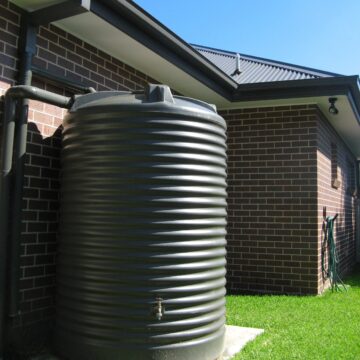When it comes to harvesting rainwater for your home, selecting the right size tank is a critical decision. It can significantly influence your water savings and sustainability goals. The best size for a rainwater tank varies greatly depending on several key factors, including the rainfall pattern in your region, the roof area, the intended use of the harvested water, the space available for the tank, and any regulatory requirements. This post aims to guide you through these considerations, helping you make an informed choice that balances efficiency with practicality.
Average Annual Rainfall
Firstly, consider the average rainfall in your area. Simply looking up local climate data can be incredibly insightful. This allows you to estimate the volume of rainwater that can realistically be harvested throughout the year. Areas with less frequent but heavier downpours may require a larger tank to capture as much water as possible during these brief periods of rain.
Collection Area
Next, the size of your roof plays a pivotal role in determining the ideal tank size. The larger the catchment area, the more rainwater you can potentially collect. To calculate your catchment area, simply measure the length and width of your roof. You can convert your roof surface area into litres of rainwater using the following simple ratio.
Roof size (m²) x Rain (mm) = Rainwater yielded (L) I.e. 1mm x 1m² = 1L
In simple terms, every square metre of roof yields 1 litre for every millimetre of rain received. Remember, water collection also depends on the slope of your roof and the type of gutter system you have.
Water Usage
The intended use of the collected rainwater is another crucial factor. Matching your tank capacity to your usage reaps the best value from your free water supply. If you plan to use rainwater primarily for garden irrigation, your needs will differ from someone intending to use it for house supply. If you are connecting kitchen, bathrooms or laundry, you will use your rainwater much faster than general garden use alone. A quick way to determine your water usage is by examining your most recent water bill. You should also consider that your water usage depends on the number of people in your household and the water efficiency of your fixtures.
Space
The space available for your tank is an obvious yet vital consideration. Tanks come in various shapes and sizes, from slimline models that fit snugly against a wall to large, round tanks that require significant ground space. Assess the area where you plan to install the tank, keeping in mind the need for easy access for maintenance and the potential impact on your property’s aesthetics and functionality.
Council Requirements
Lastly, building regulations like BASIX will also determine the rainwater tank size you will require. These requirements may vary depending on the location, size and type of your home and what you will be using your rainwater for. Council may require a minimum or maximum volume and may impose certain height or width restrictions. In addition to planning requirements, there may also be plumbing/installation requirements and health requirements to consider. If you are unsure what your relevant regulatory requirements are, you should contact your local council.
In conclusion, choosing the right size rainwater tank for your home involves a careful assessment of various factors. This will help you to select a tank that not only meets your household’s water sustainability goals but also fits seamlessly into your home environment. Remember, investing in a rainwater tank is not only a step towards self-sufficiency but also a significant contribution to conserving our most precious resource: water.

